#'10 kg of meat.'
Text
plot/relationship/whatever i REALLY WANT with egil:
he takes you on a date to his favorite place which is a place made from a nightmare bc it's a living fleshbuilding and he lets you feed it <3
#x. ooc#'egil whats in the bag'#'10 kg of meat.'#'egil why are you carrying 10 kg of meat'#':)'#he might be a true aristocrat gentleman but he is also a deranged scientist. never forget.
4 notes
·
View notes
Text
Round 1 - Phylum Mollusca
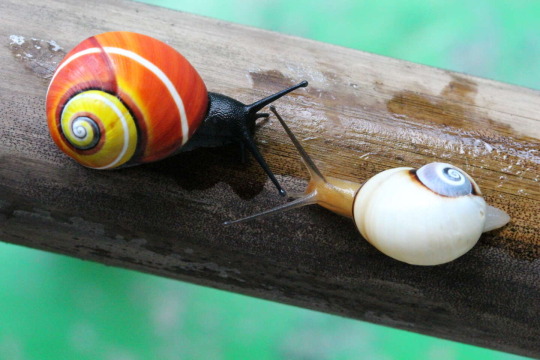

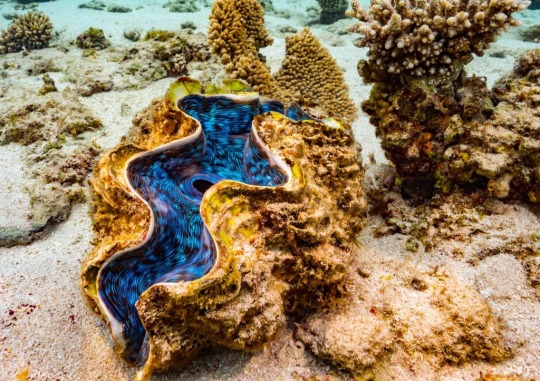
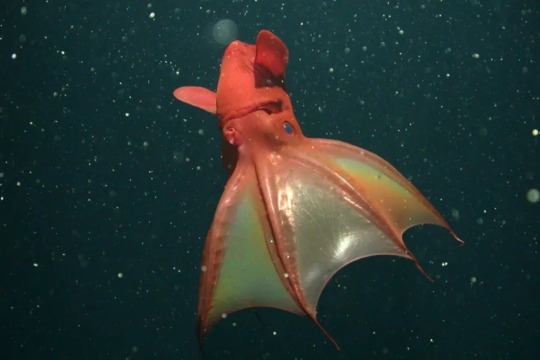
(Sources - 1, 2, 3, 4)
The second largest phylum, Mollusca contains over 76,000 living species and somewhere between 60,000 and 100,000 extinct species, including the ammonites and helcionelloids. Living groups include the chitons, solenogasters, caudofoveates, cephalopods (octopuses, squids, cuttlefish, nautiloids, etc.), scaphopods, gastropods (slugs and snails), and bivalves.
Molluscs are highly diverse, living on land, in freshwater, and in saltwater, where they comprise over 23% of all named marine organisms. The most diverse molluscs are the gastropods which comprise over 80% of known molluscs. Due to their high diversity, the only things most molluscs have in common are a soft body composed almost entirely of muscle, a mantle with a significant cavity used for breathing and excretion, the presence of a radula (bivalves excluded), and the structure of their nervous system.
Many molluscs are endangered due to collecting and killing individuals for their meat and/or decorative shells.

Propaganda under the cut:
Cephalopods are one of the (if not the) most neurologically advanced of all invertebrates and are capable of using tools, solving puzzles, and play.
Masters of camouflage, many cephalopods can change color, shape, and texture to hide from predators, sneak up on prey, and communicate with each other
The largest molluscs are the Giant Squid (Architeuthis dux), with 12–13 m (39–43 ft) long females and 10 m (33 ft) long males, and the Colossal Squid (Mesonychoteuthis hamiltoni) which is estimated between 10 m (33 ft) and 14 m (46 ft) long. The Giant Squid has much longer tentacles, but the Colossal Squid is heavier, reaching a mass of at least 495 kilograms (1,091 lb). The largest specimens of Colossal Squid, known only from beaks found in sperm whale stomachs, may perhaps weigh as much as 600–700 kg (1,300–1,500 lb).
Mollusc shells make up most of the “seashells” washed ashore, and are created by the animal via secretions of chitin and conchiolin from its mantle edge. Not all molluscs have shells (ex: nudibranchs) and for some, the shell is internal (ex: cuttlefish). Mollusc shells come in many beautiful colors, shapes, and sizes.
Most molluscs have eyes, and all have sensors to detect chemicals, vibrations, and touch. Of the phyla we have covered so far, their senses are the most developed.
Conchs can look at you like this:
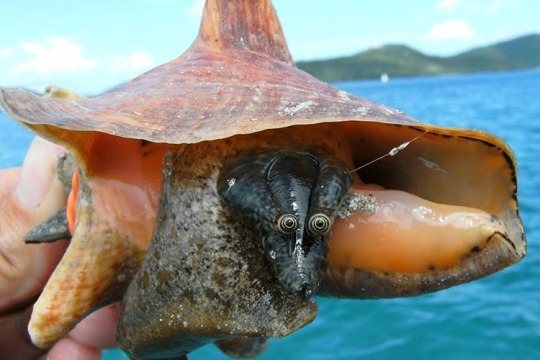
(Source)
All cone snails are venomous, and some of the larger species are some of the most venomous animals in the world. Even though some species’ stings are fatal to humans, their sophisticated venom has saved lives through its use in neurological research.
Humans don’t just use mollusk meat and shells, but also luxuries like pearls, mother of pearl, Tyrian purple dye, and sea silk. As stated above, many species are now endangered due to human use, but some are farmed for their meat, pearls, and shells. The farming of bivalves is more ecologically-friendly than the farming of chordates as, rather than create waste, bivalves like mussels and oysters actually clean the water.
As filter-feeders, bivalves are natural water filters. A single 5.08 cm (2 inch) clam can filter up to 10-12 gallons of seawater a day. They can even filter microplastics out of polluted water.
The largest bivalve is the Giant Clam (Tridacna gigas) which can weigh over 200 kilograms (440 lb), measure as much as 120 cm (3.11 ft) across, and have an average lifespan in the wild of more than 100 years.
Cover your ears, kids. Terrestrial slugs, which are hermaphroditic, have some of the most intimate sex on the planet. A pair of slugs will suspend from a chord of mucus, heads down, and intertwine their bodies in a tight spiral. They will then evert their penuses and entwine them as well, exchanging sperm while hanging in midair. Slug porn, narrated by Sir David Attenborough, for your viewing pleasure.
#round 1#animal polls#we’ve reached my first personal favorite because cuttlefish are genuinely one of my all time favorite animals
192 notes
·
View notes
Text
Wet Beast Wednesday: red-bellied piranha
For today's Wet Beast Wednesday, I'm discussing probably the most slandered of all bony fish: the red-bellied piranha. Be honest, when you hear piranha what comes to mind? I'd be willing to bet you thought of roving hordes of hyper-predatory fish that devour everything they find in minutes. Well that's not how red-bellied piranhas (or any piranhas for that matter) act. You've been lied to by the media about these fascinating fish. I'm here to correct the record.

(Image: a red-bellied piranha. It is a laterally flattened, round fish with a blunt head and prominent lips. It is a dark gray color with silver flecks and a bright red underbelly. End ID)
The red-bellied piranha (Pygocentrus nattereri) is the most well-known of the piranhas and is the species you think of when you think piranha. They are medium fish, growing to an average of 35 cm (14 in) long and 1.8 kg (4 lbs),maxing out at 50 cm (20 in) and 3.9 kg (8.6 lbs). They have round bodies flatted on the sides and gray to black scales with red underbellies and occasional black spots. Famously, they have large, sharp, interlocking teeth set in strong jaws that are usually covered by thick lips. Piranha lose and replace their teeth throughout their lives.Red-bellied piranhas are often confused with other species of piranha or the closely-related red-bellied pacu, whose juveniles have a similar coloration. As pacu and piranha have similar body shapes, an easy way to tell them apart is the teeth. Piranha have sharp teeth while pacu have blunt teeth.

(image: a close-up of a red-bellied piranha showing the teeth, which are large, triangular, and very sharp. End ID)
With teeth like those it's not surprising that piranhas eat meat. What may surprise you is that they also eat plants. In fact, plants, including seeds and fruits, make up a large portion of their diet. When they do eat meat, they prefer to scavenge or go after small animals like small fish, worms and other invertebrates. They will also opportunistically nip off fins or scales from other fish. This isn't unusual for piranhas. All species eat plants and some are exclusively herbivorous. Red-bellies eat so much carrion that they are comparable to vultures. Both animals help control disease, clean their environments, and recycle nutrients. When Piranha do attack large animals, it is usually in times of hunger or because the animal is injured. Red-bellied piranha do not hunt in packs, but they will rarely engage in feeding frenzies that let them take down animals as large as capybaras. Red-bellies shoal not for hunting, but for protection against their own predators, which include caimen, river dolphins, larger fish, and various birds. Shoals can grow to be hundreds strong. During the wet season, when the rainforests flood, piranha will spread out through the floodlands and primarily browse on vegetation. During the dry season, when their range contracts, the reduced amount of food leads to higher rates of carnivory. Piranha communicate with each other through displays of aggression and drumming sounds produced with the swim bladder.

(Image: a small group of red-bellied piranha. End ID)
Red-bellied piranha mate during the wet season, during which time their red bellies will turn gray. Males will dig shallow nests in sandy bottoms where grass grows and attemptp to woo females with swimming displays. When a female selects a male, the two will swim together in a nuptial display. The female then lays her eggs on the grass for the male to fertilize. The parents will then guard the nest until the eggs hatch after a few days. Larvae and juveniles hide amongst plants until they are large enough to join a shoal. In addition, younger piranha tend to feed during the day while older and larger ones shit to feeding mostly in the morning and evening. Piranha can live for over 10 years.

(Image: a juvenile red-bellied piranha. It has the same body shape as the adult, but its coloration is different. Its body is silver all over with black spots and the anal fin is red. End ID)
Red-bellied Piranha have not been classified by the IUCN, but they are considered abundant in their natural range and have been introduced outside of their range, often as a result of people releasing exotic pets. Several places, including the Philippines, restrict their import to avoid them becoming invasive species. Piranha have become popular as exotic pets, though they have some specific care requirements. Piranha are a common food fish in their native range. Piranha attacks on humans are rare and usually happen when the piranha are hungry or the humans are disturbing them. Few fatal attacks have been recorded and even those numbers may be inflated as bodies that piranha have scavenged may have been mistaken for kills. The reputation of piranha as savage predators has been traced to an expedition to the Amazon by former US president Teddy Roosevelt where he reported a story that some native peoples herded a cow into the water and it was devoured in minutes. It was later found that the natives had used nets to capture and starve the piranha in advance to put on a better show. Roosevelt's report of the incident became very popular and has influenced the popular perception of piranha ever since.

(Image: a piranha feeding frenzy. Multiple piranha are eating a pair of fish, which have been stripped to the bone. End ID)
#wet beast wednesday#piranha#red-bellied piranha#fish#fishblr#fishposting#freshwater fish#biology#ecology#zoology#animal facts#educational#informative#image described
126 notes
·
View notes
Text
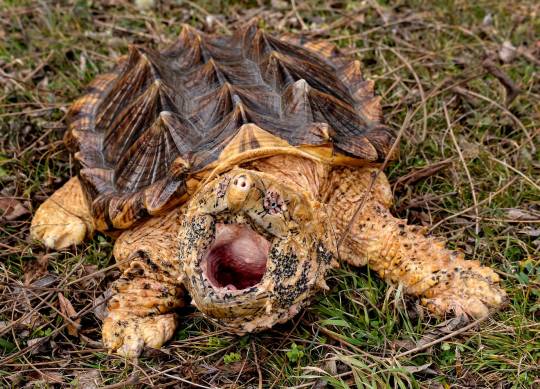


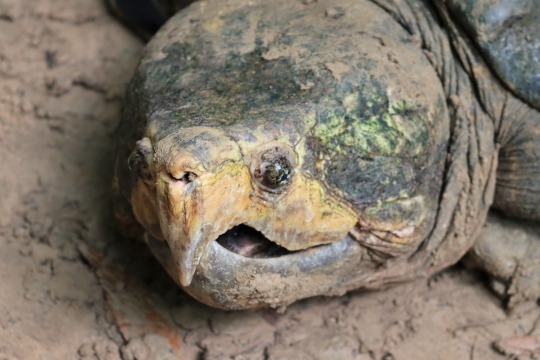
The Stupendous Alligator Snapping Turtle
Alligator snapping turtles (Macrochelys temminkii) are one of three recognised species of snapping turtle, all of which are found in North America. This particular species is found in the southeastern United States and the Mississippi Basin in particular. Macrochelys temminkii prefers deep freshwater, and is especially common in deep rivers, wetlands, and lakes.
The alligator snapping turtle is the largest freshwater turtle in North America, and is one of the heaviest in the world. Most individuals weigh between 70-80 kg (154-176 lbs), and are about 79-101 cm (31-39 in) long. However, the largest verified indiviual weighed over 113 kg (249 lb), and many others have been recorded in excess of 100 kg. The species is easily identifiable by its large, boxy head and thick shell with three rows of raised spikes. Typical alligator snapping urtles are solid black, brown, or olive green, though the shells of many older individuals can be covered in green algae.
M. temminkii is famous for its strong bite, which is most often utilised when feeding. The turtle's tongue resembles a worm, and at night individuals lie on the bottom of the river or lake bed with their mouths open. Fish are enticed by the bait-tongue, and when they get close enough the alligator snapping turtle's mouth clamps down around them. In addition to fish, this species may also feed on amphibians, invertebrates, small mammals, water birds, other turtles, and even juvenile alligators where their territories overlap. The alligator snapping turtle's relies on ambush techniques, and so hunters can remain submerged for up to 40 minutes. In some cases, individuals can also 'taste' the water to detect neaby mud and musk turtles. Because of this species' thick shell and ferocious bite, adults have few predators, but eggs and hatchlings may fall prey to raccoons, predatory fish, and large birds.
This species spends most of its time in the water, only emerging to nest or find a new home if their current habitat becomes unsuitable. Mating occurs between Februrary and May, starting later in the northern regions of the species' range. Males and females seek each other out, but generally don't travel great distances. About two months after mating, females dig a nest near a body of water and deposit between 10-50 eggs. Incubation takes up to 140 days, and the average temperature of the nest determines the sex of the hatchings; the hotter it is, the more males are produced. In the fall, hatchings emerge and are left to fend for themselves. Sexual maturity is reached at between 11 and 13 years of age, and individuals can live as old as 45 years in the wild.
Conservation status: The alligator snapping turtle is listed as Vulnerable by the IUCN. The species is threatened by overharvesting for meat and for the pet trade, and by habitat destruction.
If you like what I do, consider leaving a tip or buying me a ko-fi!
Photos
Ed Godfrey
Cindy Hayes
Eva Kwiatek
Nathan Patee
#alligator snapping turtle#Testudines#Chelydridae#snapping turtles#freshwater turtles#reptiles#freshwater fauna#freshwater reptiles#lakes#lake reptiles#wetlands#wetland reptiles#rivers#river reptiles#north america#southern north america#animal facts#biology#zoology
460 notes
·
View notes
Text
Animal of the Day!
Cuban Crocodile (Crocodylus rhombifer)

(Photo from Louisville Zoo)
Conservation Status- Critically Endangered
Habitat- Western Cuba
Size (Weight/Length)- 75 kg; 2.2 m
Diet- Small mammals; Fish; Turtles
Cool Facts- Do yourself a favor and watch a video of a Cuban crocodile galloping. These highly territorial reptiles have small dog energy and are willing to chase off the much larger American alligator that they share their home with. Cuban crocodiles may be the only crocodile to hunt in coordinated packs to take down much larger prey, showing off extraordinary levels of intelligence. Sadly, Cuban crocodiles are almost extinct in the wild due to mass hunting for their skin and meat, along with general fear for territorial predators. Luckily, zoos across the world are captive breeding Cuban crocodiles with hope for reintroduction to the wild.
Rating- 13/10 (Can run 35 kilometers per hour.)
#animal of the day#animals#reptiles#crocodiles#tuesday#january 9#cuban crocodile#biology#science#conservation#the more you know
189 notes
·
View notes
Text
Does anyone have a solid number on how many people Hannibal actually killed? I know the ripper only had 9-10 official victims in season 1, and more as the monstro, but also-
The average human has, I think, about 70-75 pounds of edible meat, and the healthy amount of red meat per week is apparently 500g (~1.1 pounds) of red meat. But Hannibal isn’t eating all the person. Lungs are around 1000g, the average adult male has a leg weighing about 15 kg, so depending on his storage method, Hannibal could probably stretch his victims to a few monthes on average, and close to a year for the larger parts, but that’s with 0 waste, and without any dinner parties or other social events. So either-
Hannibal is killing people outside of being the ripper, but because they’re never found/displayed, it’s assumed they were killed by animals or freak accidents, or just went missing, and Hannibal uses them to supplement his diet when he isn’t being the ripper.
Or, much funnier, Hannibal supplements his diet with regular meat from stores, and will sometimes treat himself to the human meat if it’s about to go off or if he feels he deserves it. There have been several times when he reached into the freezer for certain cuts, and only realise halfway through that what he’s cooking isn’t actually pork.
(Also, if he killed, let’s say four people a year from ages 18 to 43, his age at the beginning of the show, that’s 100 people, roughly 10 more than the most prolific real life us serial killer. Although, he’d only need to do that if he wasted a lot of the body, or it went off before he ate it. Again, without any additional meat for guest or parties).
This entire thing was researched incredibly lazily, so feel free to comment correcting any inaccuracies.
59 notes
·
View notes
Text
Want a quick and easy chili recipe?
I have my mom's chili recipe that takes like 15-20 minutes of actual work and another 15 or so of simmering. It makes a really big pot, just so y'all are aware, and I'm already halving the recipe for y'all.
You'll need:
3 lbs (1.4 kg) ground meat of your choice (higher fat content produces a better flavor, and is cheaper) [Use 4 lbs if you aren't adding beans]
2-3 large (24oz) cans of tomatoes (petite diced and crushed are needed, but if it's still too dry (it won't usually be), add tomato sauce until it hits the consistency you want)
1 small (6oz) can of tomato paste (roughly one tube, if that's what you have)
1/2 cup or so of red wine (a robust (dry and full-bodied) one is best, and you can usually find a cheap cabernet sauvignon)
2 small/medium onions, cut large
1 12oz can of black beans (optional)
Optional, but I like it: tomatillo salsa or crushed/diced tomatillos. (You can get the flavor well enough with just half a tomatillo.)
All these spices to taste:
Dill
Worcestershire sauce
Cumin
Goya Adobo spice mix (it's salt, black pepper, garlic powder, and oregano, so pretty easy to substitute if you can't find it)
Your preferred chili powder (spice level irrelevant)
To Cook:
Saute onions (and a couple spices if desired) in cooking oil of your choice on medium-high heat until just about translucent, then add your ground meat, lower temp to medium heat, and cook until done (about 10-15 minutes, depending on the size of your pot).
Stir in tomatoes one can at a time in order of importance (tomato paste last), until it reaches the desired consistency. Add tomatillos, if desired. Add spices and wine to taste. Add black beans, if desired. Simmer for 15 minutes on low to medium-low heat.
More spices, tomatoes, or wine can be added at any point in the simmering process, so feel free to taste it as it cooks!
Notes:
Even the halved recipe here serves 5 adults for a full meal with leftovers. If you don't have the fridge space, halve the recipe again.
You can serve with soda crackers or cornbread, or even add it to a bowl of mac and cheese. I also recommend having some sour cream and smoked Tabasco sauce at the table.
My preferred meat is 80/20 ground beef, my mom uses ground turkey, and my grandpa uses cubed beef instead of ground (and also doesn't add beans). You can also use ground lamb or mutton, venison, or whatever meat you have available; the recipe doesn't change.
Depending on where you live in the US, the total cost if you have nothing but the spices will be around $50 for 6-8 meals.
My grandpa is making me add something here: adding black beans will affect the overall flavor of the chili. If you want to split the recipe into two pots after adding the tomatoes and seasonings and see which one you like better, feel free to experiment! He hates beans in chili, but they're a cheap stand-in for meat.
This recipe is a cheaper and faster adaptation of my grandpa's recipe, which I can provide to anyone who asks.
35 notes
·
View notes
Text

It's September. 15th of this month we, Mexicans, celebrate Independence Day. The whole month, most of the households would prepare traditional food. One of the most delicious and expensive dishes we make is Chiles en Nogada. Mexico has many types of food; the most common is baroque food. Baroque food was created by mixing ingredients brought by colonisers and traditional ingredients. The purpose of Baroque food is to NOT PERCEIVE the ingredients; every bite must generate an explosion of well-balanced flavours in the mouth. This dish is one of those.
Chiles en Nogada is a complex dish; most people would buy it. No, let me correct that; not many people even from here have tasted it because it's expensive af, and the ones who have the means would buy it because it is a pain in the ass to make.
Now, if you want to impress your locals, seduce a Mexican, or challenge your culinary skills this is for you.
The recipe might vary from household to household. This was passed on by my granny, and this is her granny's recipe. SO.
LET'S BEGIN!!
Ingredients!
(I don't care if you don't like x or y, or if you have an allergy or are on a diet, if you can't eat one of these, don't fucking disgrace this legendary recipe.)
150mL of canola oil.
4 finely minced garlic cloves
1 big ass onion finely minced
500g of grounded beef meat
500g of grounded pork meat
2.5 tablespoons of salt
10 red tomatoes
250mL of chicken broth
250g of peeled almonds (preferably minced or sliced, by peeled I mean without the brown cover.)
100g of raisins (finely minced.)
2 Plantanes (NOT BANANA, PLANTANE!)
250g of pine seeds
5 cloves
1 Stick of cinnamon (I used 5cm in length)
1/2 tablespoon of grounded black pepper.
1/2 tablespoon of oregano
Thyme (I don't know how much, in grams this is, be generous.)
2 Minced and peeled peaches
1 Minced pear
1 Minced apple
1 Minced acitrón (I couldn't find it. Acitrón is cristalized maguey. I substituted it with 300g of: Approx 100g of crystallized sweet potato, 100g of crystallized chilacayote, and 100g of crystallized pumpkin).
15 Fresh Poblano Chilipepers (These ARE NOT BELL PEPERS, THESE ARE POBLANO PEPERS, they are spicy.)
1/2 L of milk (cow fresh pasteurized milk, the fresher the better, do not use light milk, we need the fat to mix with the fats of the cheese and the nuts)
250g of goat cheese.
Seeds of 3 pomegranates.
1/2 Kg of peeled fresh Castilian nuts (Juglans regia, the 1/2kg must be nuts without the hardcover).
METODOLOGY!!
Roast, peel, and devein the Chiles. To roast, put them directly on fire until the peel turns black. They are easy to peel when they are hot, so once they are out of the fire, take off the peel (yup, we do this with our bare hands). If you are weak, save the roasted chiles on a cloth and put them inside a plastic bag to "steam." Once cold, you can also peel them; this method works, but it's time-consuming. We also devein the chiles with our hands; if you are weak, use gloves. Please take a moment to appreciate my mom taking off the veins and seeds. She is so talented!


2. Fry the onion in the canola oil until brown. Add the garlic and fry until brown. Add the meat and let it cook on low heat for 20min.
3. Mince the plantains and fry them, use as much oil as you need. Now, I don't care what you believe, the plantains need to have black areas, the blacker the better! They are FINE! I promise. Fry until they look like that:

4. Put water to boil, and let the tomatoes rest/cook? for one minute, then take them out of the boiling water and take off the peel. Put them in the mixer, add the chicken broth, and blend.
5. Add the blended tomatoes and the plantains to the big ass pan where the meat is. This isn't going to look pretty but trust the process!

6. Add the almonds, raisins, pine seeds to the big ass pan.
To show off your wealth and look generous to the people you are sharing this dish with add extra pine seeds.✨

7. Add the oregano, cloves, cinnamon, thyme, pepper, and salt, and mix until all that is well integrated.

Place the thyme, the cloves and the cinnamon on top. We are going to take these out, so make sure you can remove them.
8. Do not cover the pan, let it cook low-heat until it dehydrates. I let this cook for 40min. Once it is dehydrated, remove the cloves, cinnamon, and thyme, add the peaches, the pears, apple, and acitrón (or if you fail getting the acitrón, like I did, use the crystallized fruits).

Mix all that and let it cook low-heat for 20min. This is how it should look like:

9. Now… (🔥laughs) It's time to peel the nuts!! Put water to boil, add the nuts and let them there for ONE minute, take them out of the boiling water and peel that thin dark layer. This is painfully exhausting and BORING, BUT NECESSARY!! You must do it! Otherwhise the final taste will be bitter.


10. NOW, Time to make the Nogada!!! Blend the milk, the nuts, the goat cheese with half a tablespoon of sugar (regular) and salt to taste. The cheese I used had salt, so I didn't use any.
FINALLY, FUCKING FINALLY!! 🔥
11. Fill the cold chiles with that glorious mix we made in our big ass pan, pour some Nogada on top, decorate with pomegranate seeds and parsley. Eat it with rice.
#mexican food#chiles en nogada#recipes#grandmacore#fairy cottage#lmao#I should go to sleep; I'm so tired
8 notes
·
View notes
Text
30 Day Thinspo Challenge All In One Because I’m Bored And Trying To Prevent Cravings

1. 175cm tall, 54kg, BMI is 17.8
2. 5’9. I like this height, but I wish I were a little taller.
3. Kate Moss. Any explanation needed?

4. What everyone will say. And how much it will fuck up my metabolism permanently.
5. I have been stuck like this for YEARS, I want to be skinny so bad. And yes, I am doing it for me
6. No, not really. If I ever get really bad cravings, I just chew a heap of food up and spit it out (disgusting, I know, it’s so bad 😭)
7. Yes. I think mum suspects something’s wrong, but dad doesn’t care. Or if he does, he hasn’t mentioned it.
8. 2 minute side plank, 25 left lifts per leg, 50 side-lying left lifts per leg, 25 hip thrusts, 25 Russian twists with a weight, 50 butt-kicks and mb 20 or so squats if I’m up to it. I’m not very fit, I mostly just do walking.
9. I’ve had someone point out after a lost a bit that I was doing it for attention, though that didn’t actually make me feel all that bad.
10. Pizza. And crisps. And chips.
11. Don’t think I have one, tbh. I just scroll on Pinterest or twitter until I come by one I like the look of.
12. A lot of apples, and eggs. Lots of safe-foods, too, which I think definitely sets me back a bit.
13. Very unhealthily I’d say.
14. At LEAST 48 kg. Just until I don’t have to see a psychologist for ADHD meds, because she has to weigh me and if my weight gets too low, she’ll tell my mum.
15. No. I don’t eat a lot of meat in general, but I haven’t cut it out. I rlly like a good few other animal products, so I don’t think I’d ever get away with a vegan label.
16. About three or nearly four years ago
17. I’m guessing so.
18. Chocolate or garlic bread.
19. I actually am not sure. I didn’t eat much of it beforehand either.
20. Again, don’t really have one. I’m starting the ABC diet, though, so I’ll see how that goes.
21. I only really wearing baggy clothes bc I’m quite trans, but as far as I know: a medium in shirts and a UK 28 in pants. Idk
22. I’m at my lowest weight currently.
23. To The Bone didn’t help.
24. I’m not either of them, so not very highly.
25. I tried so hard to, but I don’t think I have a very active gag reflex because it never really worked.
26. I will look fanTASTIC! Honestly, though, it’d probably worry a few people, but that’s the plan.
27. Depends on whether or not I’m with friends. If I see my friends eating, then I’ll want to eat, but if they’re lot with me, I’ll either try to ignore it or (again) chew it then spit it out.
28. Yeah, why not.
29. Don’t have one. I actually think all sizes are lovely, just not on me, but everyone says that so what does it matter.
30. 10 facts:
1) I was born a girl but I don’t think I am one, which is mostly the reason why I’m doing this.
2) My ribs poke out quite clearly but I’m fairly sure that’s because I’ve got a wide ribcage 😭.
3) Skins is one of my favourite TV shows.
4) My safe-foods are garlic bread, chocolate, carbonara, peanut butter, and Nutella - once again, it’s so bad.
5) This is probably the deepest I’ve ever been in an ED, and I’ve been doing this for years now, so it’s getting serious.
6) I take ADHD medication that reduces my appetite, and I’ve only recently started them, which I’m guessing it why my weight has been dropping more than usual. HOORAY
Can’t think of any more facts, I’m not that deep.
#tw ed ana#4nor3xia#only pro for tags#tw ed but not sheeran#ed relapse#4n0rexic#i wanna lose weight#skinnyyy#30 day challenge
9 notes
·
View notes
Text

Osso Buco in red wine stew with creamy mash
Super easy to make: Put 1-1.5 kg of Osso Buco, cloves of garlic (I put 8, you can put 10 or a dozen - they will be melted in the end), 1 bay leaf, 2 teaspoons of black peppercorns and salt (not too much at this stage, you can add more later) in a heavy base pot, pour in 1 bottle of red wine - top with cold water to cover the meat if necessary. Bring it to boil (skim the scum on the surface), then turn it down to let it simmer for 3.5 hours - or you can stick it in the oven in 150C degrees for 3-4 hours. Add chopped carrots after two hours and add the mushrooms in the last 30 minutes.
Meat should be falling off the bones when it’s done.
6 notes
·
View notes
Text
I continue to eat everything, a lot. "normal" things "normal meals" maybe for "normal people" but that's not good. I have my future sister-in-law's wedding in May and I have to lose at least 10 kg... I have no motivation, every morning I eat a croissant with chocolate, for lunch and pasta and for dinner meat/fish with either vegetables or fried potatoes. I'm no longer following the ketogenic diet (which didn't help me lose weight either) I often go walking and take 7/8k steps. I'm in an infinite loop. I'm always hungry, I eat at any time of day or night. I do not know how to do. despite all my weight is always around 65kg (170cm) so it's not good. help.
#34t1ng d1s0rd3r#4nor3xia#@n0r3xia#b0n3sp0#i wanna lose weight#eating disoder trigger warning#st4rv3#weight loss journey#light as a feather#thinspp#@nor3x14#@na trigger#ed not sheeren#ed dairy#ana e mia
8 notes
·
View notes
Text
Bamya- me style
ingredients
2.5 - 3 lbs (around 1.5kg) preferred red meat cut into pieces- I usually use my thumb to the first knuckle as a guide. I've used boneless beef short ribs, chuck roast, and lamb, and when I get the chance would enjoy trying oxtail. Basically anything goes.
0.25 cup (60ml) and 3 tablespoons cooking oil.
4~ cloves of garlic
0.25 cup tomato paste
1 red onion, sliced (optional)
Quarted tomatoes, usually 4 large ones is good. You want 0.75-1 pound (375-500g) of them
1.5 cups (375ml) water
0.5 lemon or equivalent amount of juice
1 Tsp paprika
1 bay leaf
1 jalapeño pepper, sliced thinly
1 tsp sugar
1 - 1.5 lbs (1/2 kg or 500g - 750g) okra
1 bunch fresh mint
Salt and pepper
Rice ingredients
2 tbsp cooking oil
1 cup (250ml) rice- either basmati or calrose/Egyptian rice
1.5 cups (375ml) water
2 bay leaves
1 tsp coriander
Salt
Optional: a few strands of saffron
0.5 lemon or equivalent amount of juice
Steps
Season meat on all sides with salt and pepper. I usually put it in a container with a lid and shake to ensure it's throughly and evenly coated.
Pour 0.25 cup oil into a pot, such as a Dutch oven, and heat on medium. Brown meat on all sides and remove.
Add garlic and tomato paste into pot. Add in onion and cook until translucent, if using. Add tomato quarters into pot, giving them a good squeeze to help the juices get out and thin out the paste.
Add in water, lemon juice, paprika, bay leaf, jalapeño slices (to your liking; if I'm using frozen I might throw basically the entire pepper in). Add meat back in and sprinkle with sugar. Simmer uncovered on low and preheat oven to 350f.
In another pan, add 3 tablespoons oil. Turn heat to high and fry okra for 1-3 minutes, until bright green and slightly blistered. Toss with salt and a squeeze of lemon juice.
Stab okra into the stew around the pieces of meat. Add a dozen mint leaves and place into oven for 2 hours. If liquid reduces too much, add water. Uncover after 2 hours and allow to cook for 10 more minutes (I don't always bother with this, but if you do it on broil it does add a little something extra)
30 minutes before the stew is done, start rice. Pour oil into pot and heat on medium-high. Pour in rice and fry for 1-2 minutes. Add in water, and turn heat all the way up. Add in spices. Once boiling, turn heat down to low and cover for 20 minutes. Remove lid and pour in juice, mixing it in quickly. Recover and set aside off the heat until stew is done.
CCing @soup-mother
4 notes
·
View notes
Text
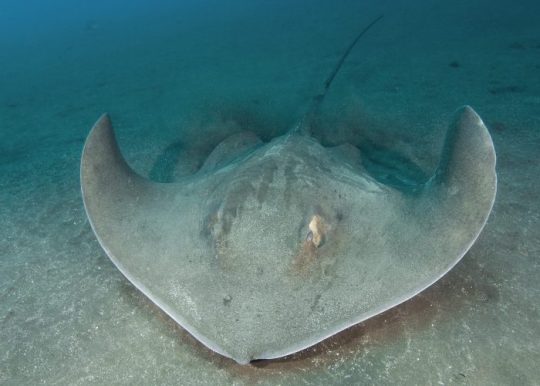

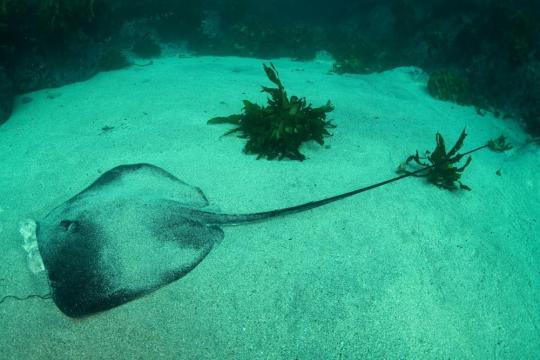
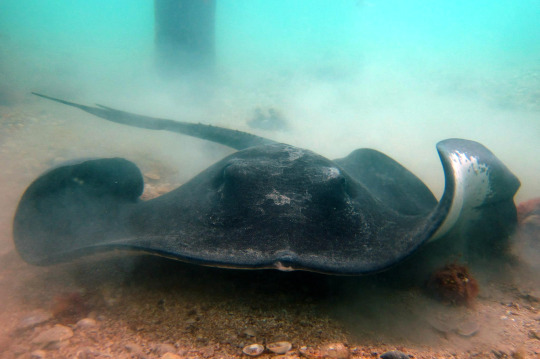
A Stingray Abroad: The Broad Stingray
Bathytoshia lata is a stingray known by many names: the broad stingray, the brown stingray, and thorn tail stingray; Dasyatis lata, Dasyatis thetidis, and Dasyatis ushii. The species has accumulated all these names-- and quite a few others-- thanks to its broad distribution. It can be found in the Atlantic, Pacific, and Indian Oceans, as well as the Mediterranean sea. Typically the species stays on reefs or in coastal bays with muddy bottoms. Prior to 2012, genetic testing of stingray species revealed them to be populations of B. lata, hence the multitude of latin names.
The broad stingray is one of the largest species of stingrays; the average individual is about 1.5 m (5 ft) across and 56 kg (123 lb), with some populations reaching an excess of 2.6 m (8.5 ft) across and 290 kg (639 lbs). Females also tend to be larger than males. The body is diamond shaped, and the tail is often more than twice its length. B. lata is dark in color, often tan or black, with a white underbelly. Perhaps its most distinctive feature are the 'spines'-- also known as dermal denticles-- that line the tail and rear portion of the body, giving it the name 'thorn tail'.
The brown stingray is fairly docile, and spends most of the day lying inactive on the sea bed. At night they forage for crustaceans, polychaete worms, and small fish. They can use their powerful pectoral fins to burrow through the sand and uncover prey, and like sharks they have special organs called ampullae of Lorenzini that allow them to detect electrical fields emitted by their prey. The primary predator of B. lata is the hammerhead shark, and when threatened individuals will raise the spines along their tail to deliver whip-like blows.
Females become ready to mate in the summer, typically from November to March. Males are attracted to pheromones released by the female, and initiate a dance-like courtship ritual. If the female is receptive, he will bite down on her pectoral fins while grasping her with special claspers located at the base of the tail. Following the mating ritual, the female gestates her young internally for 10-12 months. This species is ovoviviparous, and the pups recieve nutirents from both a yolk and internally secreted milk. Following her pregnancy, the mother gives birth to live young, typically 3-4 in a litter. The pups are completely independent, and receive no parental care after being born. It takes them about 14-16 years to become fully mature, and individuals can live up to 28 years in the wild.
Conservation status: The broad stingray is considered Vulnerable by the IUCN. Its most common threat comes from being caught as by-catch in fishing nets, and intentionally for their meat and skin.
If you like what I do, consider leaving a tip or buying me a kofi!
Photos
Andy Murch
Sarah Speight
Andrew Green
Phillipe Guillaume
#broad stingray#black stingray#Myliobatiformes#Dasyatidae#whiptail stingrays#stingrays#rays#cartilaginous fish#fish#marine fauna#marine fish#coral reefs#coral reef fish#benthic fauna#benthic fish#coasts#coastal fish#Atlantic Ocean#Indian Ocean#Pacific Ocean#Mediterranean sea#animal facts#biology#zoology#ecology
96 notes
·
View notes
Text
Animal of the Day!
Bluebuck (Hippotragus leucophaeus)

(Photo in Public Domain)
Extinction Date- 1800
Habitat- Southern Africa
Size (Weight/Length)- 200 kg; 1.6 m
Diet- Grasses
Cool Facts- By the time the bluebuck was scientifically described, it was already on the decline and the Europeans certainly didn’t help. Bluebucks lived in small herds and spent their lives on the move in search of fresh grasses. These antelope are considered the first large African mammal to go extinct in modern times. Changes in environment, such as a rising sea level, and low genetic diversity already put the bluebuck at risk. Europeans then hunted the antelope to extinction for its meat and as museum specimens. Multiple rock paintings depict Bluebuck throughout Africa and were believed to have supernatural potency by Neolithic peoples. Roan and sable antelopes, their closest relatives, still wander Africa today. Sable antelope are critically endangered due to illegal hunting and conservations are rushing to make sure it doesn’t go the way of the bluebuck.
Rating- 13/10 (Only remembered by four taxidermied individuals.)
#animal of the day#animals#mammals#antelope#monday#october 2#bluebuck#biology#science#conservation#the more you know#taxidermy#extinct#extinctober#roan antelope#sable antelope
157 notes
·
View notes
Text
🍖 Lamb Tagine with Prunes 🍖
Ingredients: Serves 4 to 6
For the Tagine:
2 tablespoons olive oil
1.2 kg lamb shanks, trimmed of excess fat (about 4 small or 3 large shanks) - see notes for other meat options
4 large onions (about 800g), chopped
1 tablespoon finely chopped garlic (about 4 cloves)
1 teaspoon ground turmeric
1 teaspoon ground ginger
1 teaspoon salt (or more to taste)
¼ teaspoon ground black pepper
¼ teaspoon saffron
1 large coriander bouquet, tied
Toasted sesame seeds or chopped roasted almonds for garnish
For the Caramelised Prunes:
300g soft dried prunes
3 tablespoons honey
1 teaspoon ground cinnamon
Method:
Brown the Lamb: Heat olive oil in a large casserole over medium-high heat. Once hot, add lamb shanks and brown on all sides. Avoid flipping the meat too early to prevent sticking.
Sweat the Onions: Remove the browned lamb shanks and set aside. In the same casserole, add onions and reduce heat to medium. Cover and cook for 10-15 minutes until onions are soft and translucent.
Cook the Tagine: Return the lamb shanks to the casserole, then add garlic, turmeric, ginger, salt, pepper, saffron, and a cup and a half (320 ml) of water. Place the coriander bouquet on top. Bring to a boil, cover, and simmer on medium-low heat for about 2 hours or until the meat is tender and falls off the bone. Check halfway through and reserve ½ cup of the cooking liquid. Add a bit of water if needed to prevent drying.
Prepare the Prunes: While the tagine cooks, soften prunes by boiling them in water for 5 minutes, then drain. In a small skillet, combine the reserved liquid, prunes, cinnamon, and honey. Simmer over medium-low heat for 5 minutes until the sauce thickens.
Serve: Arrange the lamb shanks and onion sauce on a plate. Top with caramelized prunes and drizzle with prune syrup. Garnish with toasted sesame seeds or chopped roasted almonds. Serve with couscous or crusty bread.
Notes:
You can use any type of slow-braising beef or lamb pieces trimmed of excess fat for this recipe, such as lamb shoulder, lamb or beef neck, or beef shin.
Enjoy this delicious, hearty dish! 😋 #LambTagine #MoroccanCuisine #ComfortFood

#food photography#garlic#seeds#seed#agriculture#backyard#gardening#garden#fruit#vegetables#herbs#herb#foods#foodie#foodporn#foodgasm#food#ausgov#politas#auspol#tasgov#taspol#australia#fuck neoliberals#neoliberal capitalism#anthony albanese#albanese government#sesame seeds#chia seeds
4 notes
·
View notes
Text
Endosirens
Biology

Skin Pigmentation: Mainly white or beige, undertones strongly depend on climate, terrain and humidity level. Common undertones in forest areas are red, pink, light green or orange; in marshes you're more likely to meet Endosirens with dark green, brown or purple undertones. In manmade structures, the hues can vary greatly, ranging from bright yellow to chocolate brown, black or even rainbow colored (very rarely though).
Skin Texture: The body appears and feels very much like the outside of a marshmallow; very soft and almost kind of fuzzy. The "cream" is actually mucus emitted by the creature, and appears differently based on the humidity level and general temperature. The hotter and more humid the surroundings are, the softer it becomes, to the point of being almost liquid. In very dry or very cold places, it dries up, becoming porous and darker. For short periods they're able to hide underneath a hardened "shell" to keep their body moist and warm, but they will dry out and die if the harsh conditions don't change.

Eyes: Mammalian Eyes, positioned similarly to cat's eyes. The pupil takes up almost all of the space, allowing them to see perfectly even in complete darkness.
Hair: Doesn't have hair, but conveniently places dabs of "cream" on top of their head to mimic human hair and eyebrows. Some of them have developed a sense of style of some sort, putting genuine effort into making their "hair" look presentable.
Ears: Two lop ears on the side of their head. Very sensitive to low frequencies and to touch.
Dentition: 28 Carnivore teeth.
Diet: 80% meat, lives mostly on monster and human innards.
Nose: No nose, only a small nub of skin that vaguely resembles such in an attempt to copy human-like appearance. They smell with their antennae.
Height Range: Between 10 cm/4 inches and 100 cm/40 inches
Weight Range: Between 250 g/0.55 lbs and 10 kg /22 lbs
Sexes: Male (50%), Female (40%), Morphodite (10%)
Sexual Dimorphism: Males have larger antennae and are generally bigger in size. They tend to emit more herbal or spicier scents than their female counterparts, who are more likely to attract their prey with the scent of fruit or candy. Females produce a larger amount of "cream", which they often use to mimic human hair or clothes. Females generally feel more drawn to human prey because of the sweeter meat, while males are more likely to go after monsters and animals. Morphodites are rarer, and mostly found in dryer/colder places with harsh conditions for their species, or manmade areas like small towns or farms.

Intellect: They are about as intelligent as a human teenager, but lack the ability to speak due to the shape of their tongue. They have the ability to think, plan, make choices and decisions, and to understand human language.
Longevity: Their lifespan depends on the surrounding climate and how often they get to eat. They can live from anywhere between 30 and 200 years.
Immunities: Endosirens are immune to most acids, including stomach acid. While they cannot catch on fire or burn, they can melt to the point of being unable to hold themselves together. Same situation with water - they struggle to hold themselves together in a strong river, for example. But falling apart, crumbling and losing limbs is not very much of an issue for them, since they can regenerate in the right conditions, unless the head begins to fall apart as well. It's possible for them to freeze to death, to dry out entirely, and to be burnt beyond regeneration, for example when they fall into lava (which rarely happens but hey...)
Locomotion: Endosirens move through a combination of contractions and the secretion of "cream", similar to snails.

Legs: No legs; similar to snails, they have one "foot" made of firmer matter that they use to move.
Arms: Depends on their personal choice; some have arms, some do not. They can grow limbs and fingers at will in the right conditions. Most male Endosirens like to have either four arms or tentacles to help with hunting prey, while most females like to have two almost humanoid arms to make themselves more appealing to humans.
Antennae: Their antennae function as noses, lures, and a secondary sexual characteristic for them. They come in all kinds of shapes, forms, lengths, diameters and colors, and their appearance is strongly influenced by their surroundings, climate and overall health. For example, an Endosiren that resides in a forest area is more likely to have antennae that resemble branches or flowers, while an Endosiren that lives near humans may mimic food or even toys. Males generally have larger, more colorful antennae than females. The scent of the antennae is what attracts their prey, and their scent is strongly influenced by their age, diet, health and hormones.

2 notes
·
View notes